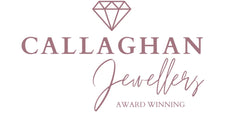Jewelry in Fashion History: A Journey Through the Ages
Jewelry has played a vital role in fashion for centuries, evolving alongside cultural, social, and artistic movements. From the lavish adornments of ancient civilizations to the bold statement pieces of the modern era, jewelry has always been a reflection of personal style, status, and craftsmanship. Let’s take a journey through history and explore how jewelry trends have transformed across different fashion eras.
1. Ancient Civilizations: Symbols of Power and Spirituality
💎 Egyptian Jewelry (3000–30 BCE)
- Gold, lapis lazuli, turquoise, and carnelian were widely used.
- Symbolic motifs like scarabs, the Eye of Horus, and ankh crosses represented protection and eternal life.
- Pharaohs and elites wore elaborate collars, headdresses, and rings to display wealth and divine status.
💎 Greek and Roman Jewelry (800 BCE–476 CE)
- Greeks favored delicate, nature-inspired designs featuring olive leaves, snakes, and laurel wreaths.
- The Romans popularized gold signet rings, cameos, and gemstone-studded necklaces, emphasizing luxury and craftsmanship.
- Jewelry was not only decorative but also used as amulets for protection.
2. The Middle Ages: Religious and Regal Elegance
💎 Medieval Jewelry (5th–15th Century)
- Jewelry was worn by royalty and clergy, symbolizing power and religious devotion.
- Heavy gold and silver pieces were adorned with rubies, sapphires, and emeralds.
- Brooches, rings, and pendants featuring crosses and heraldic symbols were popular.
💎 Renaissance Jewelry (14th–17th Century)
- Revival of classical Greek and Roman influences, with a focus on intricate goldsmithing.
- Pearls and colorful gemstones were highly prized.
- Cameos and portrait lockets became fashionable, often used to display portraits of loved ones.
3. The Baroque and Rococo Eras: Extravagance and Opulence
💎 Baroque Jewelry (17th Century)
- Bold, oversized designs with ornate detailing.
- Diamonds gained popularity, often set in elaborate, multi-tiered settings.
- Lavish pearl necklaces and gemstone-studded tiaras were must-haves for European nobility.
💎 Rococo Jewelry (18th Century)
- Lighter, more playful designs with floral and ribbon motifs.
- Pastel-colored gemstones like pink topaz and aquamarine were in vogue.
- Delicate chokers and drop earrings complemented the elegant fashion of the time.
4. The Victorian Era: Sentimental and Symbolic Designs
💎 Early Victorian (Romantic Period, 1837–1860)
- Nature-inspired motifs like leaves, flowers, and snakes (symbolizing eternal love).
- Lockets containing hair or portraits of loved ones were sentimental keepsakes.
💎 Mid-Victorian (Mourning Period, 1860–1880)
- Dark gemstones like onyx, jet, and garnet reflected the era’s somber tone.
- Intricate, gothic-style brooches and mourning rings were common.
💎 Late Victorian (Aesthetic Period, 1880–1901)
- Shift toward lighter, more whimsical designs with delicate filigree work.
- The rise of diamond engagement rings, thanks to improved gem-cutting techniques.
5. The 20th Century: Bold Statements and Changing Trends
💎 Art Nouveau (1890–1910)
- Organic, flowing designs featuring butterflies, dragonflies, and female figures.
- Emphasis on handcrafted techniques with enamel and opal accents.
💎 Art Deco (1920s–1930s)
- Geometric shapes, bold contrasts, and symmetrical patterns.
- Platinum, diamonds, and colored gemstones created striking, architectural designs.
- Flapper-era jewelry included long pearl strands, cocktail rings, and bold cuffs.
💎 Mid-Century Glamour (1940s–1950s)
- Hollywood-inspired designs with oversized pearls, gold bangles, and diamond-studded pieces.
- Charm bracelets became a popular way to personalize jewelry collections.
💎 The 1960s–1970s: Boho and Modernism
- Flower power and bohemian influences introduced chunky beads, turquoise, and silver jewelry.
- Modernist designs featured minimalist, sculptural pieces with clean lines.
💎 The 1980s–1990s: Statement Pieces and Pop Culture Influence
- Oversized gold chains, hoop earrings, and costume jewelry became mainstream.
- Iconic brands like Chanel and Versace popularized bold, logo-centric accessories.
6. Jewelry Today: A Mix of Tradition and Innovation
In the 21st century, jewelry trends blend vintage revival with cutting-edge technology. Sustainable and ethical jewelry movements are gaining traction, with brands focusing on lab-grown diamonds, recycled metals, and fair-trade practices. Minimalist, everyday pieces coexist with bold statement jewelry, allowing for endless self-expression.
From ancient royalty to modern fashionistas, jewelry has always been an integral part of style and identity. Whether you prefer timeless classics or contemporary designs, each piece carries a history of craftsmanship, culture, and artistry.
Conclusion: The Ever-Evolving Beauty of Jewelry
Jewelry trends have changed dramatically over the centuries, yet their significance remains timeless. Whether inspired by historical elegance or modern minimalism, jewelry continues to be a powerful form of self-expression. As fashion evolves, so too will the ways we adorn ourselves—always reflecting the spirit of the times.
